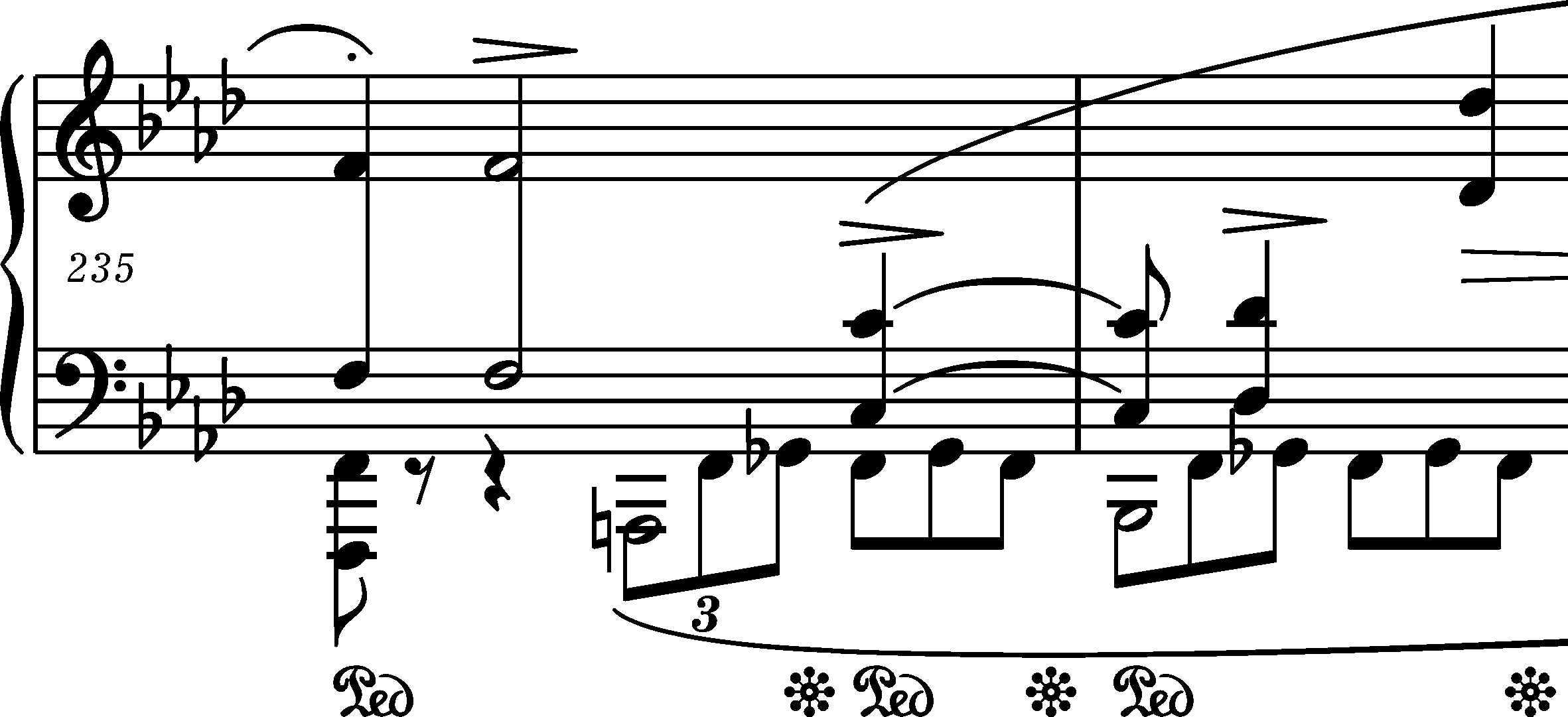



Main text
compare
In three similar situations, each spanning one bar and a half, in which the bass note (sometimes multiplied) introduces a new key, opening the theme with characteristic syncopations, Chopin indicated varying pedalling concepts in A and FE:
The visible inconsistency in the marks gives rise to the following conclusions/observations:
- Chopin most probably was adding at least some indications to almost finished sources: A, [FC] and FE1. What is more, he did it at a different time and did not coordinate these additions.
- The lesser number of indications in FE could be related to the hasty and random (to a certain extent) proofreading, which included only the most important marks (a similar picture emerges from the analysis of other performance markings). Moreover, oversights by the copyist or by the engraver cannot be ruled out.
- Chopin hesitated how long the first pedal in each of the discussed sections should be held – he marked 3 different concepts: half a bar in FE in bar 68, 3/4 of a bar in both sources in bar 235 and an entire bar in A in bar 68 and 155. The version in bar 235 could be related to the R.H. part being led in octaves, while both pedalling versions from bar 68 seem to suit the texture in bar 155 as well, hence in this bar we suggest a respective variant solution.
- Chopin also hesitated whether to write pedal marks in places in which the accompaniment features harmonic legato – holding chord notes with fingers, in this case bass notes. In these places (the 2nd and 3rd halves of the bar in the provided examples), the minims at the beginning of each six-quaver figure allow for this fragment to be performed without pedal, without prejudice to the harmony, that is in accordance with the marks in bar 69. However, in bar 156 Chopin entered pedal marks into A, as if he forgot the extended bass note. According to us, it could have been done due to haste in entering (or adding) pedal marks, hence in bar 156 we introduce variant notation into the main text, giving the performer the choice as to the use of pedal. Similar combinations of pedal marks and harmonic legato can also be found in the Nocturne in F
 minor, Op. 48 No. 2, bars 7-8 without pedal and bars 35-36 with pedal (in terms of perception, in the Nocturne the use of pedal in these bars is much more striking than in the Fantasy).
minor, Op. 48 No. 2, bars 7-8 without pedal and bars 35-36 with pedal (in terms of perception, in the Nocturne the use of pedal in these bars is much more striking than in the Fantasy).
Compare the passage in the sources »
category imprint: Differences between sources; Editorial revisions
notation: Pedalling






 .
.